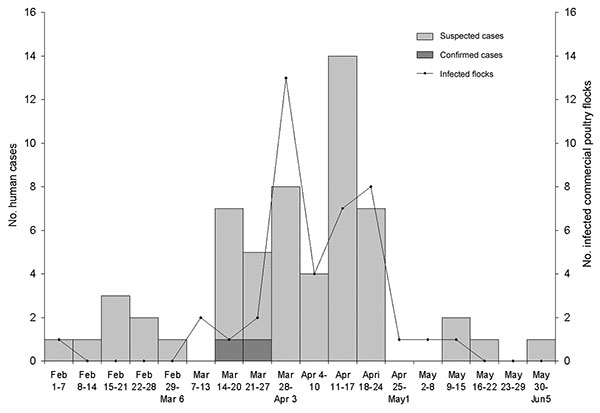Volume 10, Number 12—December 2004
Dispatch
Human Illness from Avian Influenza H7N3, British Columbia
Figure

Figure. Onset of symptoms for suspected and confirmed cases in humans and identification of infected commercial poultry flocks, highly pathogenic avian influenza H7N3, British Columbia, 2004. Date for poultry flock is either the date the flock was suspected to be infected (because of clinical illness) or the date the sample was taken as part of surveillance.
Page created: April 14, 2011
Page updated: April 14, 2011
Page reviewed: April 14, 2011
The conclusions, findings, and opinions expressed by authors contributing to this journal do not necessarily reflect the official position of the U.S. Department of Health and Human Services, the Public Health Service, the Centers for Disease Control and Prevention, or the authors' affiliated institutions. Use of trade names is for identification only and does not imply endorsement by any of the groups named above.